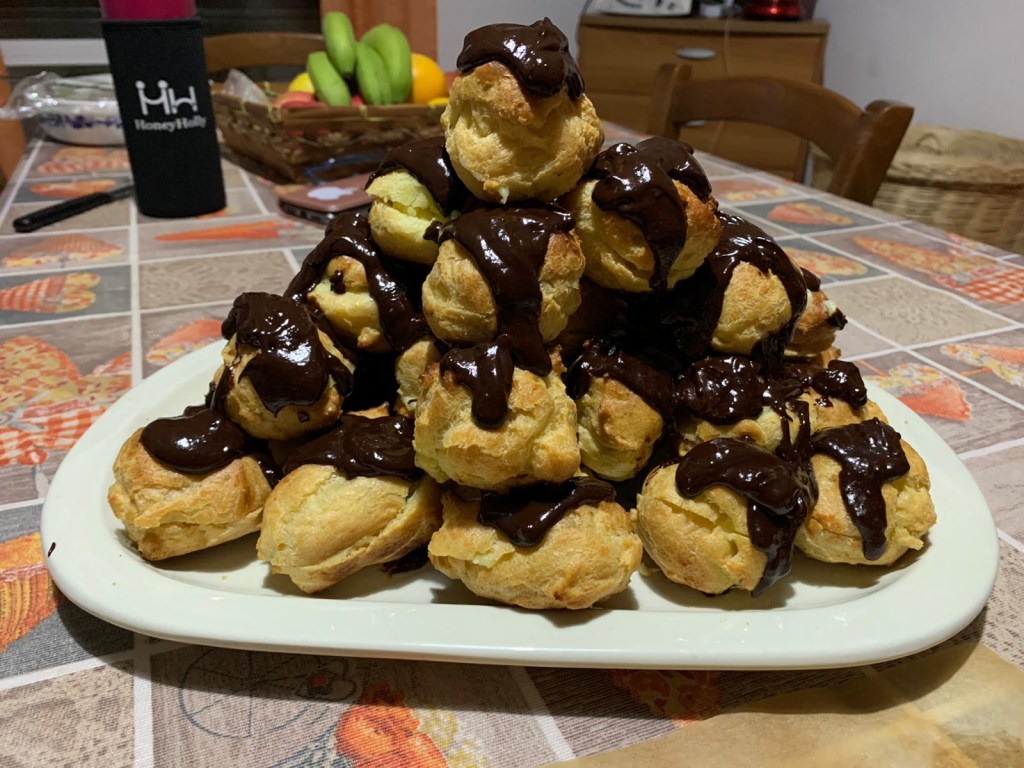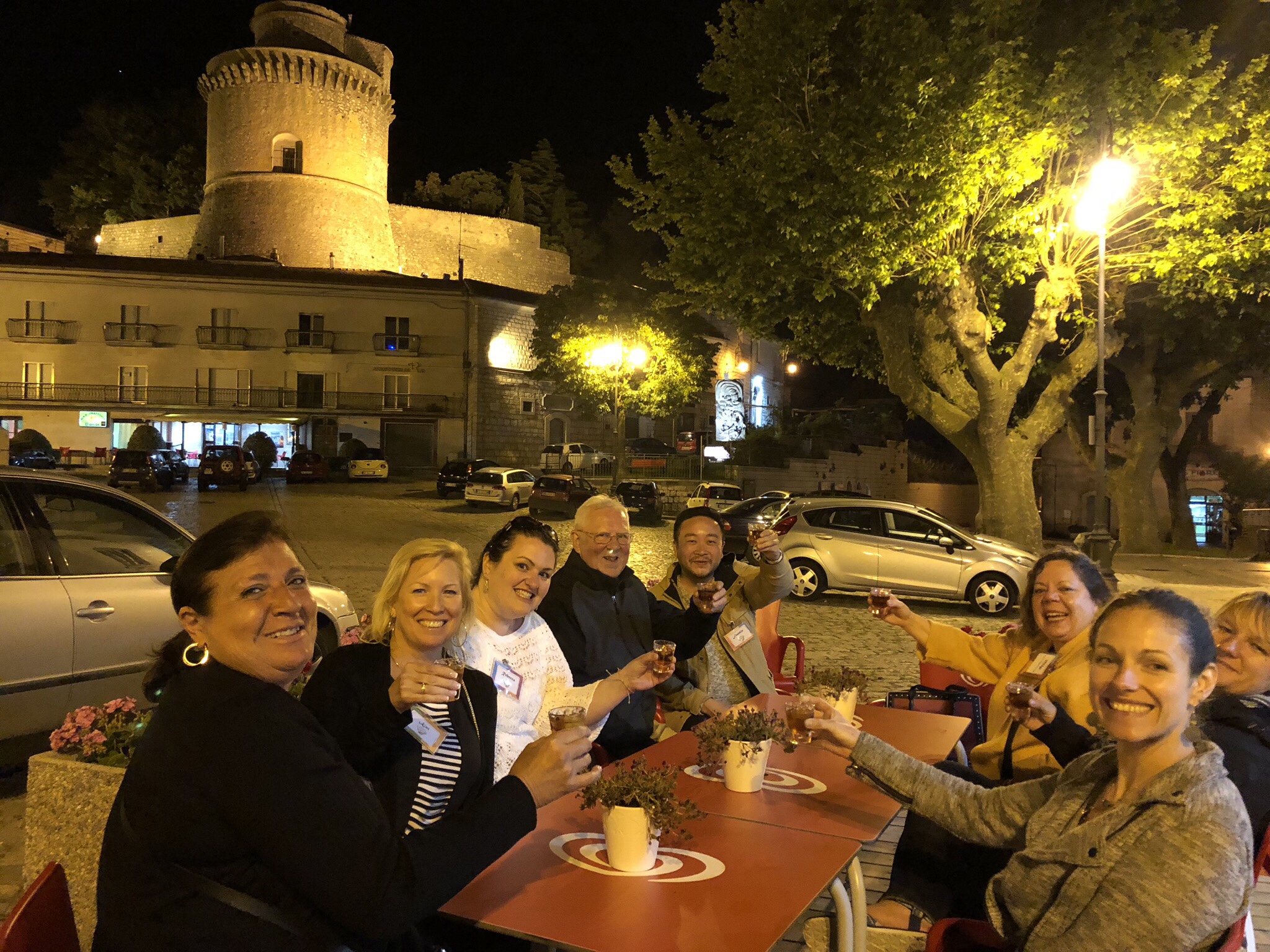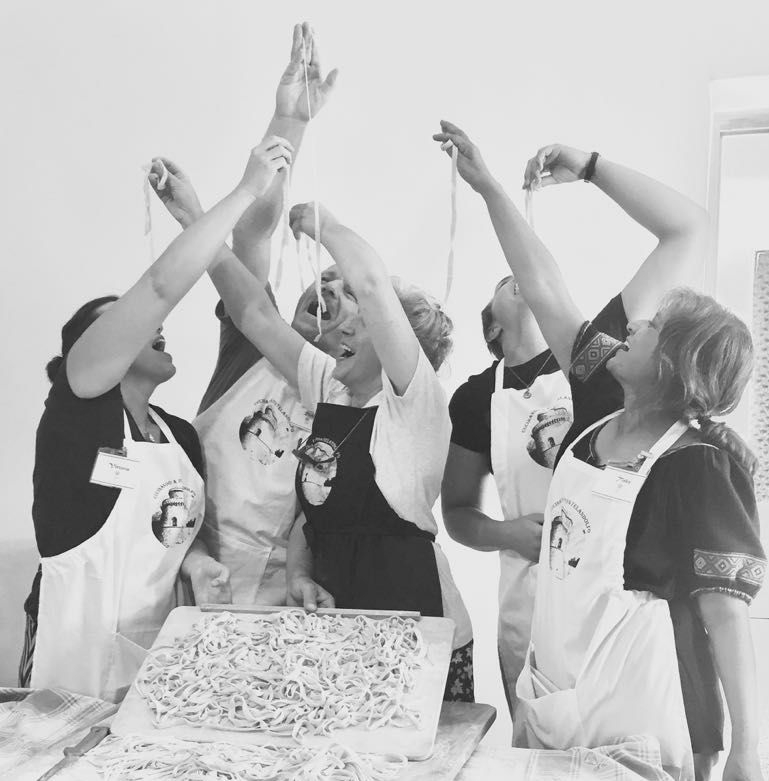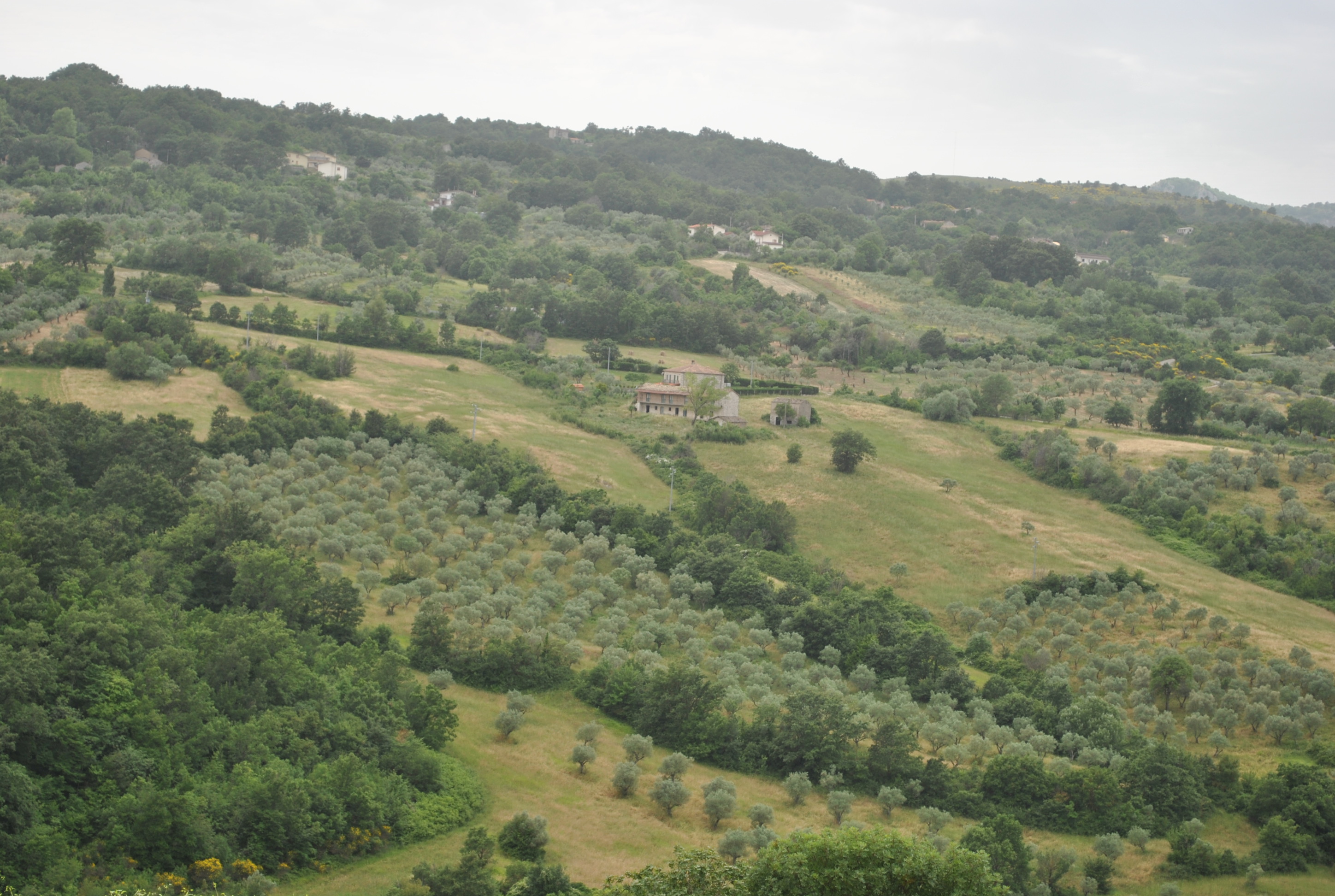
Walking into the house Carmela Fusco shares with her husband – ace mushroom harvestor, Mario Mancini, and her family, the first thing the one notices is a petite elderly woman sitting next to an open fire. Zia Peppinella, Carmela’s mom, lives with the family. This sense of family and great outpouring of love make a trip to Carmela’s a wee bit like going back in time to a place where we all felt loved and safe. It is not unusual in Southern Italy for multiple generations of a family to live, work and share their lives together. That is something that I remember growing up in rural New Jersey – unfortunately it seems to have ended with my generation.
Carmela Fusco is a Pontelandolfese through and through. As passionate about her home town as she is her cooking, Carmella was willing to leave it behind and help advance her husband’s career by moving to Milan. With a degree in primary education and an experienced teacher, she looked at the Milan assignment as a culinary adventure. She had the opportunity to explore and embrace the fare of Northern Italy! During her 13 years there, her spontaneity, smile and neighborliness insured her a circle of friends. Through them, she cultivated her appetite for cooking and explored the secrets of Milanese cuisine.
Back now in the village she loves, Carmela takes care of her large extended family. Every day, in a kitchen filled with great smells and laughter, Carmela cooks lunch for a minimum of eleven people! She looks at that as an opportunity to further experiment and cultivate her devotion to cooking.
Carmela’s dishes are an interesting mixture of traditional Southern Italy cuisine, learned from her mom, and the best Milanese traditions. She shops daily for the freshest ingredients and is fortunate to have a husband who forages the mountains for truffles, mushrooms, spring asparagus and more. You too can feel like you are invited to lunch – read her cooking hints on the Facebook page, A Pranzo Della Nonna! Her motto is cooking with the heart is good for the soul too.
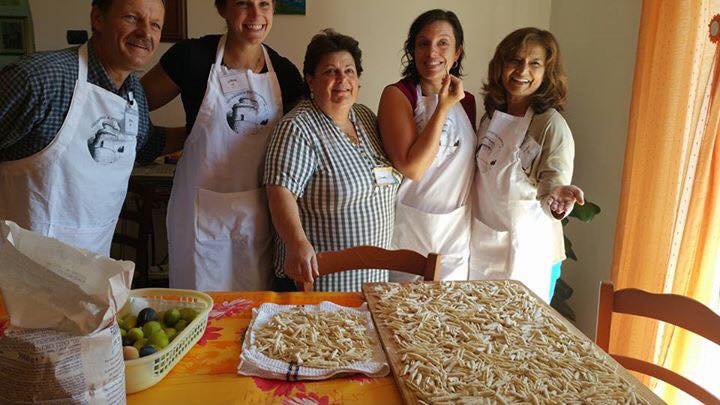
Happy Cooking in the Kitchens of Pontelandolfo Cooks & their Cicategli!
Carmella is one of the women who open their homes to those adventuresome foodies who visit our little village as part of the Cooking in the Kitchens of Pontelandolfo project. Cicategli is a pasta mainstay in Pontelandolfo. Served with a thick meat sauce and lots of freshly grated cheese it can a make any day a happy day. My nonna’s cicategli sauce was made with pig’s feet and I still smile when I think of it.
Cicategli -Cavatelli Ingredients
Flour 0 and 00 – Fine and Extra fine. Water as needed.
Before the class started, Carmella showed us the Cavatelli maker she bought that allows her to spin out enough pasta for 11 -15 people in about a half an hour. We got excited about using it. She smiled and put it away! You will learn to make pasta the way my grandmother taught my mother and my mother taught me!
Boil the water. Carmella never uses cold water to make cavatelli. As her mother before her, she discovered that when you make this pasta kneading hot water into the flour insures the cavatelli, while boiling, won’t stick to each other. Also, after working the dough a long time, if you use cold water, you would have to continually put your fingers in water or the dough will be too dry.
Put 500 grams of each type of flour on the wooden pasta/bread board. Carmella’s board was huge and is used almost daily. We tossed around the idea of just using our American counter tops. Carmella and Zia Peppinella looked at us, smiled and said try it! But I knew in their heart of hearts we should all go buy a board.
Make a well in the middle of the flour. While kneading, slowly add hot water to the flour. Knead on the floured board until you want to toss the board at your husband. Keep kneading and add flour – lots of flour.
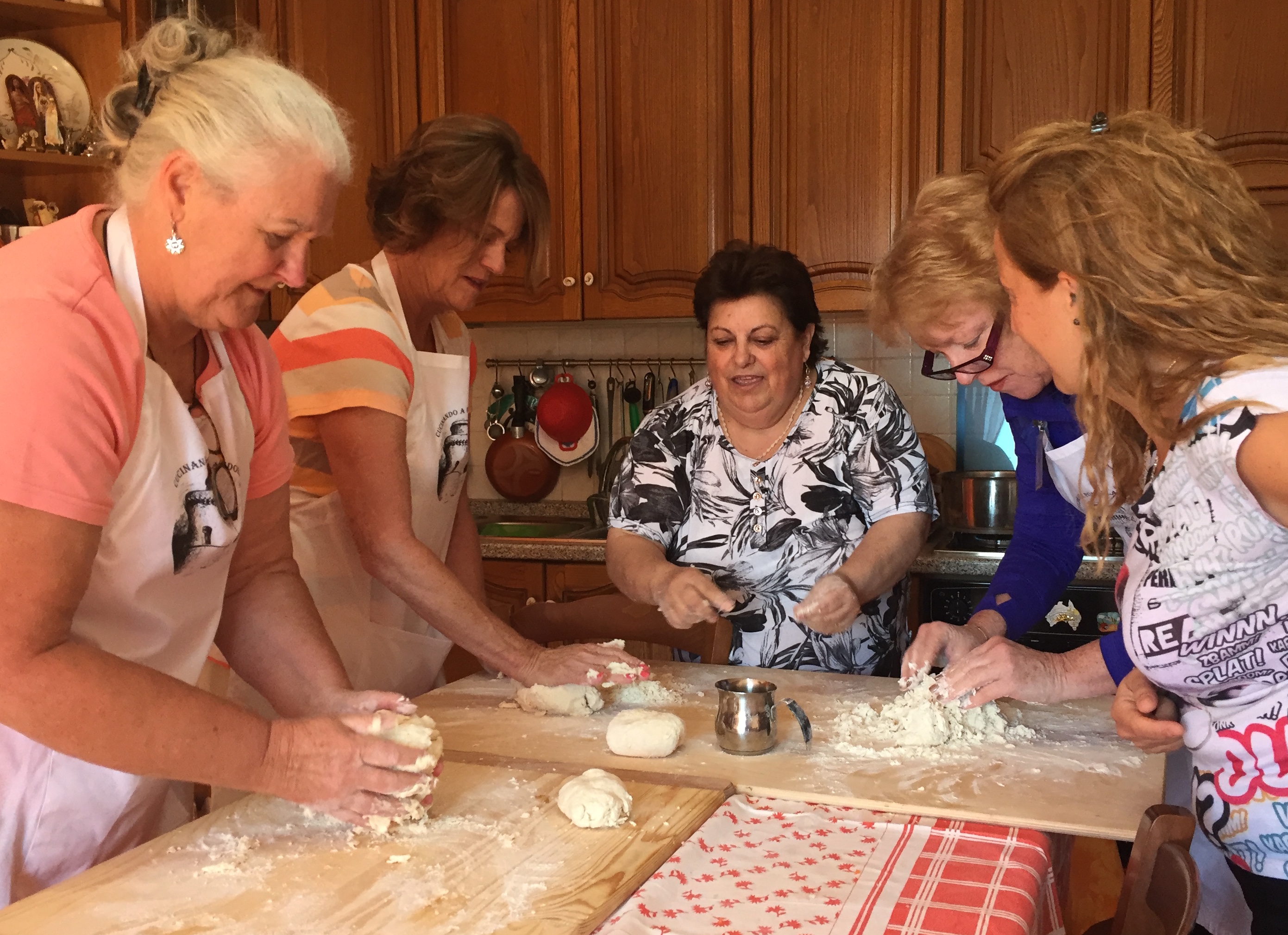
Using the heel of your hands – fold over each side of dough, add flour and do again. She used up both bags of flour – 1000 grams and it still felt wet. Knead about half an hour. Seriously, I kept sneaking a peak at my watch – we kneaded about half an hour. No one got tired or else we refused to admit that our arms didn’t have the power of an Italian home cook! We all kept kneading, talking and of course sipping wine!
The dough will tell you when it wants to be made into pasta.
That is not the wine talking – it is the dough talking. When you touch the dough, your fingers will come away dry. Carmela said it was like testing a cake – when you put a knife or toothpick in a cake and it comes out dry – the cake is done. If dough still sticks to your fingers add flour and knead.
Cut about 1 inch or a two finger width of dough off the kneaded loaf. Put that dough through pasta machine on number 1 two or three times. Or get out that trusty rolling pin and roll the dough thin, thin, thin.
Cut the thin sheet into 2-finger or 2-inch long strips. Then cut the strip into about 1/4 – 1/2 inch slices.

Using your fingers, pull the strip towards you – saying cicategli and then flick the rolled pasta away from you. Sounds easy right? We laughed at our mounds of flattened dough.
Carmella made us do it again and again and again. Hey! We got it! Thanks Carmella! Start the 3 fingers just on the outside of the strip of dough and then roll back. Using three fingers you are pulling the dough towards yourself while saying cicategli. It is important to the pasta gods that you say cicategli!
Now practice the two handed technique. You have to feed your family at 1:30 and need to get these four million cavatelli done. Carmella astounded us with her two handed technique. She whipped that pasta out using both hands to roll and flick. Who needs a machine!!
Put the finished cavatelli in one layer on a wooden board or cotton sheet to dry a little.
The dough will keep for 3 days in refrigerator or you can freeze it. Making it with hot water allows you to freeze it for 3 months. It is important to remember to defrost the cavatelli for two hours before you use it.
Carmella reminded us to never clean wooden boards with water. Scrape the goop off the board with the flat back of knife. Water gets in the wood and the board hates that. Make sure you wipe the board with dry rag.
Zia Giuseppina, Carmella’s mom looked at us all firmly and said, when you go back,you must continue to make pasta this way or the traditions of our village will be lost.
She also noted, You have learned how to make cicategli now you must learn how to eat it! Cavatelli amano tante formaggio e sugo! This type of pasta loves a lot of thick sauce and tons of grated cheese.

After boiling the pasta we covered it with a hearty meat sauce and used the local hard sheep cheese. Because you will love the sauce do not foget the Scarpetta – little shoe – a piece of crusted local bread used to clean your plate! Let me tell you, each and every one of us cleaned our plates.
You too can Eat, Cook and Laugh in Carmela’s Kitchen! There is one spot available for the September 2018 and 4 spots available for the May 2018 Cooking in the Kitchens of Pontelandolfo program. Or you and a group of pals can contact me to set up your own dates. Just e-mail info@nonnasmulberrytree.com.
Visit us on FaceBook or our Web-Site.
Ci Vediamo!
Midge
\




